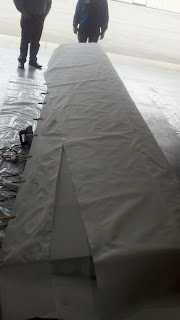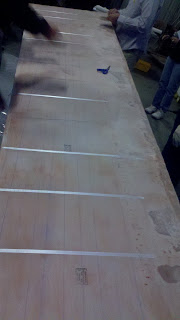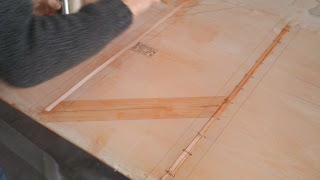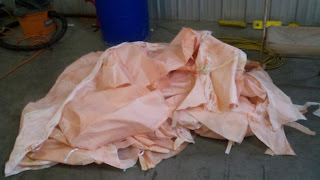This weekend, I walk into the world of past, of history, and of legacy.
Jonathan Landeros
I spent this last weekend pursuing one of my "other passions". I took a class on how to cover fabric aircraft components. That's right. Fabric. Technology that has it's roots in the earliest days of aviation, although it's still used on some aircraft, even today.
It's been something I've been learning to do for the last few months as part of my volunteering at
Planes of Fame. It's challenging, at times frustrating, and always rewarding.
"So what?" I've heard in many a demo I've presented. "Why is this important?"
Because I think these lessons cross over. I've found that things like this don't occur in a vacuum, and there are lessons that can be shared, at least in my own eyes.
So what did I learn from this class that I can apply to my greater world?
1) You often know more than you think.
My experience with covering in fabric is limited. But even that limited knowledge of having done those steps before will give you a foundation to step forward.
There was more than one point where I was thinking, "I know this part!"
 |
| Fabric laid out across a control surface |
2) You don't always know as much as you think.
The class was laying out stitching lines across a curve. The problem involved was using basic right angle geometry. We were confused on the measurement, and I was certain we should be measuring along the leg of the triangle, instead of the hypotenuse.
Another student thought it was the hypotenuse.
True to my Irish/Mexican heritage, I allowed myself to become so sure that I was right about that measurement I stubbornly stuck to a position longer than I should have. Then that light bulb finally when off. It was the hypotenuse we should be using, I had to suffer through that embarrassing moment of feeling like an ass. (Come on, admit it! We've all been there!)
 |
| Those blue lines. Where I so confidently blew my geometry. :-( |
3) Be open to learning new tricks.
Fabric covering is a process that has a lot of flexibility in it, as long as you follow the fundamentals of the process.
As a result, there was a lot of subjectivity in the way things were laid out.
There was more than once where things like, "I like this layout for the clean look." or "I like this because it's easier to put together."
Both layouts were structurally sound. It was all subjective.
It was another example where "because we've always done it that way" wasn't reason enough.
 |
| Laying out tape. As long as the tape meets specs, the look is what you like |
4) Keep learning.
I was once told that this type of class is a "License to Learn". I didn't leave this class knowing everything there was to know. But I did leave the class knowing what I needed to know. Not the least of which was how much more there was to learn.
But now this class leaves me with a strong foundation where I can carry on and continue my learning experience.
 |
| And after all that work, we tore it all off. But the lessons learned are forever. |
So those are my big lessons from my class. I'll happily apply them to my own experiences at Planes of Fame, but they can always be applied in my CAD world at
KETIV too.
After all, how many times, staring at a computer screen, have anyone of us:
1) Not said something because we had one too many doubts.
2) Opened our mouths, only to put our foot in it.
3) Seen somebody do something with a model or drawing and thought; "That's an interesting way of doing it!"
4) Walked out of a user group, classroom, or Autodesk University session and thought, "I don't know exactly what that instructor did, but I know where to look now!"
So what I've probably said here, in a lot of words, is: "Stay open minded and always keep learning!"
P.S. I've added a couple of more tips to the "
Tips & Tricks" page. Take a look!











































